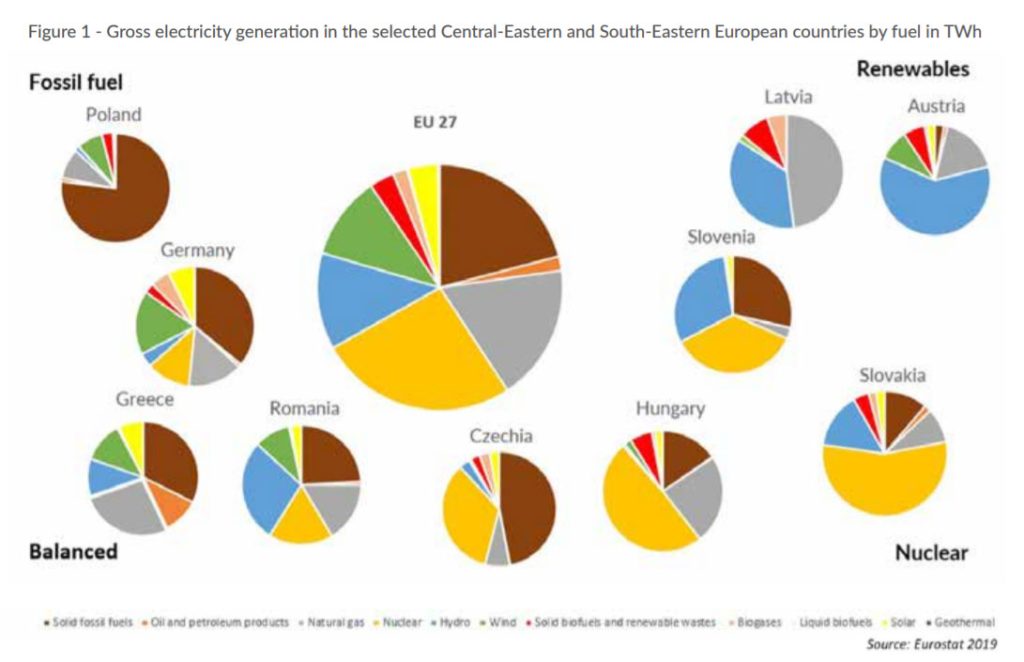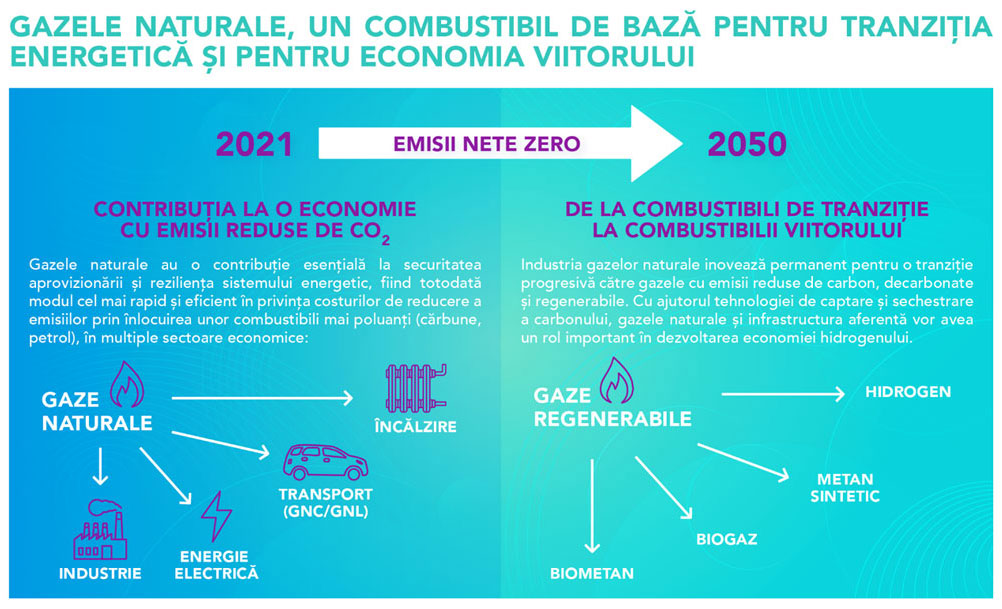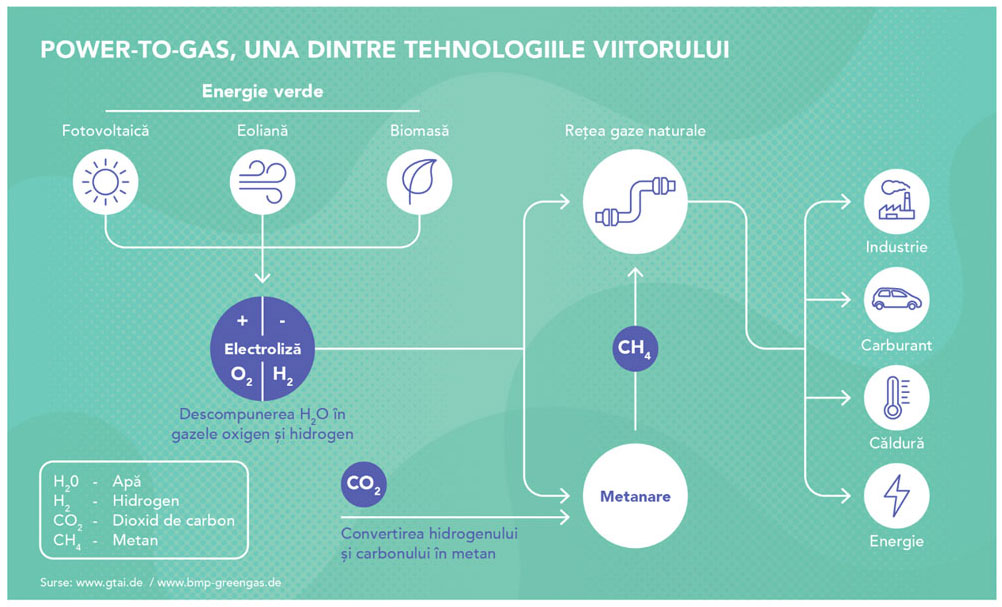To combat climate change, one of the biggest global threats, the European Union has embarked on an unprecedented decarbonisation race. Along the way, Member States must choose solutions that bring them opportunities for economic growth while having the least impact on consumers, who will ultimately foot the bill for the transition. For the energy sector and beyond, natural gas is the optimal solution in this process, with Romania in the privileged position of owning its own resources.
"Achieving carbon neutrality by 2050 requires significant efforts and commitments from all Member States and economic sectors. To enable an efficient and fair transition, it will be crucial to take into account the characteristics of the different EU regions in terms of resources and potential",
says Gas Infrastructure Europe (GIE), in its report "Decarbonisation in Central and South-East Europe: How gas infrastructure can contribute to the EU's long-term goals".
The report, to which local company Transgaz contributed, analyses the opportunities brought by natural gas infrastructure and gas in all its forms - natural gas, low-carbon and renewable - for ten countries in the region, including Romania.
Step 1: Switching from coal to natural gas
Romania and Greece have the most balanced mix, but one of the noticeable regional aspects is the significant dependence on coal in the source mix for electricity generation (2018) in almost all countries analysed, except Latvia and Austria, as shown in the graph below, extracted from this report.

Thus, "In the coming decades, natural gas will play an important role in the region in replacing coal in energy production and ensuring the flexibility of energy systems. For this part of Europe, the switch from coal to natural gas is the most reasonable, rapid and economically viable route to decarbonisation.", the EIG also states in the report.
By 2030, due to low carbon emissions compared to other fossil fuels, natural gas ensures a smooth transition from coal, especially in power generation, the heating sector and energy-intensive industries such as steel production, fertilisers, cement, petrochemicals, etc. Countries in the region are also seeking to increase the contribution of natural gas in the transport sector, in the form of liquefied natural gas or compressed natural gas.
Step 2: Integrating renewable and low-carbon gases
Also by 2030, gas transmission and distribution infrastructure can contribute to achieving decarbonisation targets by gradually integrating renewable gases, such as hydrogen and biomethane, thus ensuring the transport and storage of these gases, the EIG stresses. Preparing the region's energy system for the integration of new fuels or energy carriers is crucial in order to reach the 2050 targets.
The infographic produced by Viitorul Energiei summarises this transition:
Also, given the increasing contribution of renewables to energy systems, Power-to-Gas technology is one of the solutions of the future to the problem of surplus green energy. Energy production from renewable sources, mainly photovoltaic and wind, is fluctuating, but this technology allows excess electricity to be converted into hydrogen - and then biomethane - in a secondary process. Hydrogen and biomethane can then be fed into the natural gas grid for various uses in domestic and industrial consumption, as summarised in the following infographic:
How is Romania exploiting the advantage of its natural gas resources?
With significant domestic natural gas resources, Romania has a privileged position in the region. Their use in the decarbonisation process will enable a transition that harnesses local opportunities, generating substantial economic benefits - by supporting local industry, jobs and significant state budget revenues. At the same time, given that the technologies of the future are not yet economically viable and widely applicable, the use of domestic natural gas resources is the most cost-effective solution for decarbonisation - an important issue for a country that still has significant economic gaps to close with Western Europe.
The Government recognises the key role that natural gas will play for an optimal and cost-effective transition for Romania. In National Recovery and Resilience Plan (PNRR) sent by the authorities to Brussels at the beginning of June shows how natural gas will contribute to a rapid and efficient decarbonisation of the Romanian energy sector, in the heating sector, in transport, but also to the integration of future technological solutions, such as hydrogen.
"Restructuring the energy (by switching from coal to natural gas and integrating renewable energy sources) and heating (by rehabilitation of the SACETs, their transition from coal to gas and even renewable energy sources, combined with support for the transition of consumers to district heating) can lead to a significant reduction in air pollution", is mentioned in the NRRP.
At the same time, the Government states that, "to be able to quickly replace coal-fired capacity, gas must play a key role, in the mix with hydrogen, to support national decarbonisation targets and in line with country-specific recommendations. New gas-to-power and power-to-x projects would put Romania at the forefront of European energy innovation and we could bring more stability and security including the energy market European.".
In the European Commission's vision for 2050, hydrogen is one of the most promising technologies of the future, with multiple applications in energy production, industry and transport. Even though the European hydrogen strategy focuses on green hydrogen, Romania can smartly bet on its own natural gas resources to produce blue hydrogen - This option is also mentioned in the NRDP: "As locally produced green hydrogen becomes an alternative, it will benefit from the early introduction of blue hydrogen into the mix and related infrastructure development. Local production of hydrogen blue is the cheapest solutionto reduce emissions from natural gas combustion and practically the only solution to produce large quantities of hydrogen in the short term, with no negative effects on the balance of SEN".
"The 'backbone' for hydrogen transport
Using the existing natural gas transmission infrastructure to transport hydrogen is the most efficient solution to enable large-scale development of this technology. Last summer, a group of 11 gas transmission system operators, members of the EIG (including the national operator Transgaz), developed a vision to connect hydrogen supply and consumption through a pan-European network - consisting of 75% of existing pipelines and 25% of new pipelines. This shows a concrete way "to gradually develop a dedicated hydrogen backbone of nearly 23,000 km by 2040. In addition, it provides a clear cost analysis demonstrating that it can be achieved at socially acceptable costs.", states the EIG, in the report indicated above (which you can find at HERE).
Moreover, Transgaz, as operator of the natural gas transmission system, has foreseen in its development strategy the integration of hydrogen from renewable and low carbon sources into the natural gas transmission system. A preliminary analysis has identified 11 colours that can be included in the "backbone" of the future European hydrogen transport system (source, HERE).
The NRRP also states that Romania intends to develop a National hydrogen strategy. Read the full document HERE.
Major risk: increasing dependence on imports
So the role of natural gas for the energy transition and the integration of future fuels is undeniable. But one link in the chain is very weak: the availability of natural gas resources. With legislation that makes it difficult to increase domestic production and, above all, without the exploitation of significant deposits in the Black Sea, Romania risks significantly increasing its dependence on natural gas imports.







